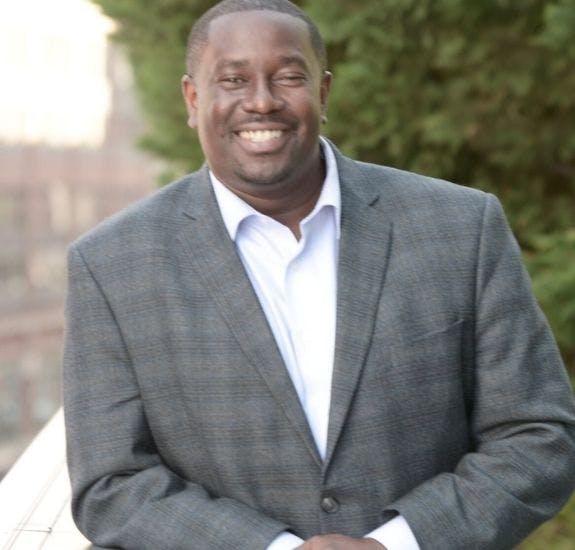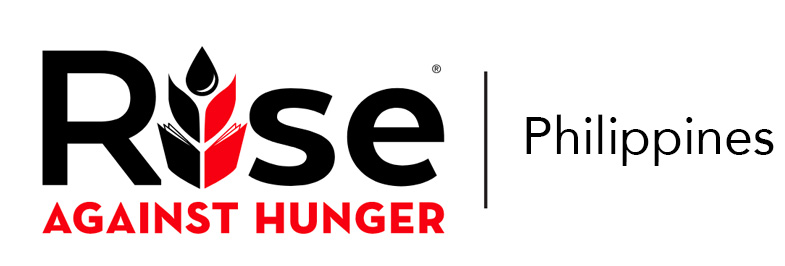What 2021 Could Mean for Global Hunger

This post originally appeared on Barry Mattson’s LinkedIn page.
Note from Barry Mattson, Rise Against Hunger CEO: In 2020, the global community faced unprecedented challenges, including a growing number of people affected by hunger worldwide as a result of COVID-19. Now, as we continue through the first month of 2021, many of us are considering what these 12 months will hold. I am not alone in my thoughts surrounding this topic – I spoke recently with Eric Mitchell about our shared views.
 Eric Mitchell is the Executive Director of the Alliance to End Hunger. In his role, Eric actively builds the Alliance’s advocacy capacity on Capitol Hill and in local communities, with the goal of enhancing the coalition’s impact around building the public and political will to end hunger in the U.S. and around the world. Prior to the Alliance to End Hunger, Eric served as Director of Government Relations for Adtalem Global Education and also served for six years as the Director of Government Relations at Bread for the World. Earlier in his career, Eric was the youngest and the first African American Vice President of Government Relations at Russ Reid. Eric began his political career on Capitol Hill, serving as Policy Advisor to civil rights icon, U.S. Congressman John Lewis, and Legislative Assistant to U.S. Congressman Sanford D. Bishop, Jr. In 2014, Eric was included in The Root 100 Most Influential African Americans under the age of 40.
Eric Mitchell is the Executive Director of the Alliance to End Hunger. In his role, Eric actively builds the Alliance’s advocacy capacity on Capitol Hill and in local communities, with the goal of enhancing the coalition’s impact around building the public and political will to end hunger in the U.S. and around the world. Prior to the Alliance to End Hunger, Eric served as Director of Government Relations for Adtalem Global Education and also served for six years as the Director of Government Relations at Bread for the World. Earlier in his career, Eric was the youngest and the first African American Vice President of Government Relations at Russ Reid. Eric began his political career on Capitol Hill, serving as Policy Advisor to civil rights icon, U.S. Congressman John Lewis, and Legislative Assistant to U.S. Congressman Sanford D. Bishop, Jr. In 2014, Eric was included in The Root 100 Most Influential African Americans under the age of 40.
As Rise Against Hunger continues to respond to the pandemic and work toward ending hunger this year, I asked Eric to share his thoughts and predictions with me about how 2021 could impact the global hunger crisis. In the below Q&A, Eric provides his honest and timely insight about what the predictions are for 2021, how hunger is impacting lives globally and what we – Rise Against Hunger and other organizations, policy makers and individuals – must do to support those facing hunger during this time of crisis.
Q: The number of people facing acute food insecurity went from 135 to 270 million in 2020, and David Beasley, the World Food Programme Director, has said 2021 poses an even greater threat. What do you predict is in store for 2021?
A: It is hard to predict what is in store for 2021, but Director Beasley is correct. I fear that the result of COVID and the continuation of conflicts in places like Yemen and Ethiopia-as well as other driving factors, such as climate -will lead to extreme hunger and famine this year, particularly in the most vulnerable countries. Ultimately, what is in store for 2021 is dependent upon how the global community reacts to the protracted global hunger crisis. Even here in the United States ““ under a new administration that is eyeing a more active global role ““ directing resources to the international crisis is a tough sell when we are trying to contain damage here at home. This is all to say that it will be critical for our community to use our collective voice to raise the importance of the global crisis in the minds of elected officials.
Q: The pandemic’s effects on hunger in 2020 were deeply concerning, and we’re facing a reality that 2021 might continue to significantly worsen the crisis. How do you think this has affected our ability to achieve the UN Sustainable Development Goal 2?
A: The reality is that global food insecurity has increased since 2014. We were already off track to accomplishing SDG2 even before 2020. COVID has only exacerbated an already existing threat. We do not know the overall numbers yet, but we do anticipate that COVID-19 and the ensuing economic fallout have caused significant increases in extreme hunger (or acute food insecurity) in some of the world’s most vulnerable countries. Specifically, according to the World Food Programme, there are currently 151 million people facing acute hunger, including 31 million at severe risk across 40 countries. So, I would honestly say that without a drastic and fundamental shift in how we address food insecurity and nutrition, the outlook for accomplishing SDG2 (Zero hunger) is quite bleak. However, I am often accused as being forever an optimist, and I do think that the current crisis could serve as a wake-up call to change this fundamental approach. With the right policies and some political courage, we can change the tide. History has taught us that we can make significant strides towards ending hunger. Between 1999-2014, extreme poverty and hunger were cut in half. We can succeed again. Part of this must include looking at how conflicts, economic instability and climate all impact hunger-and design our humanitarian, development and food systems infrastructure to respond accordingly.
Q: How important do you see food assistance being in 2021?
A: Right now, I see policy makers looking at their resources through the lens of COVID relief. There is a very intentional effort to improve global health infrastructure to ensure that we recover from the direct deadly impact of this virus. What I have not heard is how food security and nutrition play into this. When you consider that there are countries on the brink of famine due to economic fallout from COVID, you realize that there needs to be a global strategy in place to ensure that food assistance is provided to those in need, as well as long-term infrastructure in place so that we do not have such catastrophic failures in food systems when the next health crisis occurs. “Resilience” has been a big buzzword in the global relief and development world for a number of years, and we need to make sure it applies to how we respond to the pandemic.
Q: 2020 showed us, possibly more than any year in recent history, how unpredictable and unexpected things can be. As we all work to address hunger, how would you recommend preparing for unpredictability? Do you think we can?
A: Absolutely, yes. As my answer above mentions, we need to have an eye on building resilience so that communities and countries (even here in the U.S.) can be better prepared for future crises. This includes policies and programs that can quickly respond to unpredictable events ““ especially safety nets that can snap into effect at a moment’s notice. But even beyond policies, there is a role that the private sector can play in ensuring food systems and value chains are also more resilient to the unexpected. Coincidentally, there is a United Nations Food Systems Summit coming up in September in which organizations, companies and countries can discuss all of this. Hopefully, the current crisis can at the very least guide all of us to forge a more sustainable and resilient path ahead.
Q: For humanitarian organizations responding to the hunger crisis internationally, like Rise Against Hunger, what advice do you have as we go into 2021?
A: Engage your policy makers and urge them to make global food security a priority of their COVID response. Hunger and nutrition play critical roles in long-term health and development outcomes, and help build more resilient communities not only now, but also when the next crisis strikes. Here in the U.S., we need to urge President Biden and Congress to integrate food security and nutrition as pillars of their priorities as they consider how the U.S. participates in the world stage. Food security and nutrition must be part of our climate, global health and sustainability conversations.
To support Rise Against Hunger’s work in 2021 as we address the global hunger crisis, donate here.

